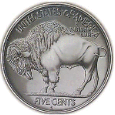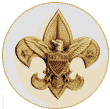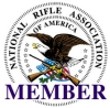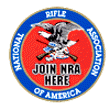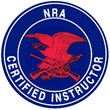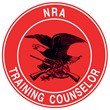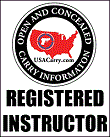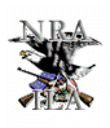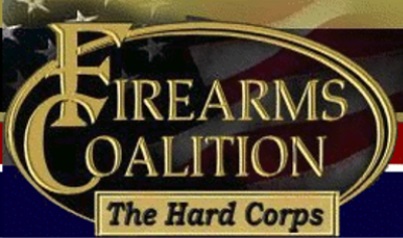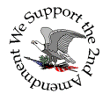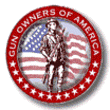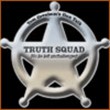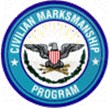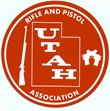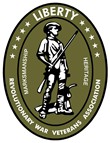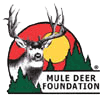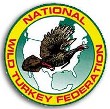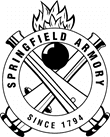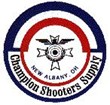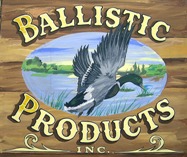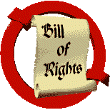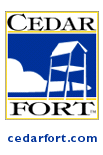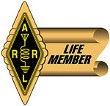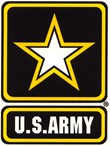|
This article is taken from the website of the Descendents of Mexican War Veterans. As you will see, there is some bias on the site. This is to be expected. Of particular interest though is the garments and pay scale of these soldiers.
Soldiers and Soldados
The majority of Americans who served in the War with Mexico were young, in their late teens and early twenties. Many of them had never been away from home before. They enlisted, in most cases, for glory and adventure. What they got, more often than not, was a bitter dose of reality; heat, dust, boredom, insects, disease and all too frequently, death - more often caused by illness than by enemy bullets.
A small number (between 11,000 and 12,000) served in the Navy or Marines (548). The majority were soldiers, either in volunteer regiments raised by nearly every state, or the regular U.S. Army, including the new regiments authorized by Congress in February 1847.
There is some difference of opinion over how many Americans served in the Mexican War. What's at issue is whether or not some early volunteer regiments, raised for three and six months - and who never saw action, should be counted. These units, mustered into service immediately after the war began, in response to an unauthorized call by Gen. Edmund P. Gaines, were all mustered out by August 1846 after Congress declared no regiment raised for less than twelve months could be kept in federal service. Some of these soldiers, after being released from service, went back home, having already had enough of the discomforts they'd put up with while encamped on the Rio Grande. Others re-enlisted, either in the regulars or in one of the twelve-month volunteer regiments.
One thing historians agree on is that being a soldier in the U.S.-Mexican War was an uncomfortable, unhealthy, and dangerous business.
Disease killed more men than bullets. This was due mainly to unsanitary camp conditions, the result of the ignorance of men who had no idea how disease was spread. At the U.S. army encampment at Camargo, in northern Mexico, conditions were especially bad. Camped in a dry, dusty valley along the banks of the San Juan River - the same source of water the men used for drinking, cooking, and bathing, illness ran rampant with dysentery, measles and other assorted ailments taking hundreds of young men to early graves in the chaparral, buried in shallow graves, shrouded in their blankets.
Primitive medical techniques along with delays in treatment also accounted for the deaths of many battle wounded who might otherwise have recovered had they received prompt and proper care and attention.
Although no formal study on the subject has been made, it appears that the mortality rate among Mexican War veterans after the war was especially high. Many men who did not actually die during the war may have later succumbed to the effects of some illness or wound they originally suffered during the war, dying at an early age.
The weapons used by soldiers in the Mexican War were generally muzzle-loading rifles or muskets, with the latter predominating since they were quicker and easier to load, although their range and accuracy left something to be desired. Dragoons and Texas Rangers usually carried five or six-shot Colt revolvers - introduced into warfare for the first time during the Mexican War. The Texas volunteers were especially notorious for arming themselves to the teeth with an assortment of pistols, knives and revolvers tucked into boots, belts and shirts.
The average Mexican infantryman carried an old flintlock musket, most of which were manufactured in Great Britain and sold as surplus to Mexico. Tending to use too much powder, many Mexican soldiers fired from the hip, rather than raising the rifle up to their shoulder where the kick could be especially painful. The result was that their shots would often go over the heads of the Americans.
The uniforms of the regular U.S. Army were made of wool and were sky-blue for privates and a darker, Navy-blue for non-coms and officers. Both enlisted and officers wore dark-blue forage caps, although generals often sported a fancy chapeau replete with feathers. Various insignia indicated whether a soldier was an infantryman, artilleryman or dragoon.
Volunteers wore a variety of uniforms, often modeled after the regular army. Some regiments, who went off to war wearing tall shakos soon abandoned them in favor of the lighter forage cap. The Mississippi Rifles, led by Colonel Jefferson Davis, sported the most distinctive volunteer uniforms. Clad in white duck trousers, bright red shirts, and broad-brimmed straw hats the Mississippi men made a name for themselves, not because of their uniforms but for their bravery, at the Battle of Buena Vista in February 1847. The Texas volunteers were usually described as the least military in appearance, wearing a variety of buckskins, homespun pants and shirts and everything from forage caps to straw hats.
General Zachary Taylor, called "Old Rough and Ready" by his men and easily one of the most popular officers of the war, was also one of the least military in appearance, preferring to wear a straw hat and linen duster with his uniform. More than one soldier commented he looked more like an old farmer than a general. By contrast, Winfield Scott was nicknamed "Old Fuss and Feathers" for his impeccable military appearance and by-the-book approach.
Niles' National Register for July 11, 1846 listed the garments volunteers required for service in the army:
1 Dress cap
2 Flannel shirts
1 Forage cap (glazed silk)
2 Pair drawers
1 Uniform coat
4 Pairs bootees
1 Woolen jacket
4 Pairs socks
3 Pr. woolen overalls
1 Leather or silk stock
1 Cotton jacket
1 Fatigue Frock (linen)
1 Pair cotton overalls
1 Blanket
The same issue also printed the current army pay scale:
| Rank
|
Monthly Pay
|
| Colonel
|
75
|
| Lieutenant Colonel
|
60
|
| Major
|
50
|
| Captain
|
40
|
| 1st Lieutenant
|
30
|
| 2nd Lieutenant
|
25
|
| Sergeant Major
|
17
|
| QM Sergeant
|
17
|
| 1st Sergeant
|
16
|
| Sergeant
|
13
|
| Corporal
|
9
|
| Private
|
8
|
In addition to the fact that their pay was so low (in relation to the hardships they had to endure to earn it), many soldiers did not get paid on a regular basis. This was definitely a sore point with most soldiers and a major source of dissatisfaction and low morale. One group of Missouri volunteers, under command of Colonel Alexander Doniphan, did not get paid at all until they were mustered out after twelve months service.
If anything, the life of the average Mexican soldier was probably worse. In Mexico's rigid class system, many of the officers were wealthy, landed Creoles (Mexicans of Spanish ancestry) while the regular troops were landless peasants, either Mestizos (a mix of Spanish and Indian ancestry) or Indians. This situation made for poor morale and a dislike and distrust of their officers by many Mexican soldiers.
Although Mexican soldiers fought bravely (and endured hardships as difficult as any suffered by American troops) their officers sometimes treated them badly. Some Mexican officers were known to slash at their own men with their sabers, to force them forward or to make them stand their ground. By contrast, many volunteer officers in the U.S. army were elected to their positions and would never force their men to drill, much less attack (although they rarely needed encouragement for the latter).
Some historians (primarily those with an anti-US bias), have engaged in wholesale denunciations of the American volunteers, suggesting that to a man they were little better than criminals. Certainly, some atrocities were committed by a certain renegade element on both the Mexican and American sides, but these, as General Zachary Taylor declared, were "unfortunate exceptions" to the way the war was waged. As for the volunteers, General Winfield Scott estimated that ninety-seven out of every hundred were "honorable men," a view that was shared by several other contemporary observers.
|
